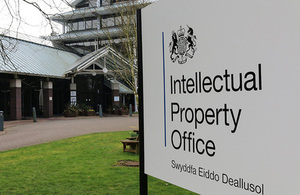IPO’s IP rights examination backlog brought to zero
More than 45,000 patent, trade mark and design examinations cleared.

In May, the Intellectual Property Office (IPO) cleared its examination backlogs for the first time in several years. Backlogs refers to cases that take longer than IPO’s service standards. It follows two of the busiest years in IPO’s history, where record numbers of applications and change requests were received.
Clearing backlogs has resulted in a faster service for IPO’s customers. Over the last three years, customer satisfaction with IPO’s speed of service for patent examination has almost doubled, rising from 42% in 2019 to 75% in 2022.
Overall, IPO achieved a customer satisfaction score of 88% in March 2022, a score which is among the highest in the UK across any industry. It also exceeds its Ministerial target of 85%.
Tim Moss, IPO’s CEO said:
Clearing our backlogs has been a huge team effort, especially given the challenges we faced in Brexit and Covid-19. Our teams have worked incredibly hard and made processes more efficient to help us complete examinations more quickly. Now we have cleared the backlogs we can firmly focus on our transformation plans.
The patent examination backlog
The patent examination backlog has been steadily growing over the previous two decades. Patent backlogs are those that have not been examined more than 42 months after the initial application.
In the last three years the number of late patent examinations reduced from 13,000 to zero. The scale of the work is unprecedented for IPO. Last April the patent backlog stood at 6,007 cases, consisting of 12,000,000 pages.
The trade marks and designs backlog
In 2020 and 2021 there was also a significant backlog of trade mark and design applications, caused by three main factors:
1. The number of trade mark applications has soared. Domestic trade mark applications have more than doubled over five years - from around 65,000, to more than 150,000 last year.
2. Since the UK exited the European Union, customers now have to go to UKIPO if they want UK protection - previously they could file at the EUIPO and gain UK protection.
3. The covid-19 pandemic led to new businesses being set up or businesses diversifying in response.
At its peak, in March 2021 the trade mark backlog stood at 32,185 trade mark applications, with it taking 35 days for the examination process. Now that the trade mark backlog has been cleared IPO is processing trade mark applications within its target of 10 days. IPO also had a backlog of 9,507 design applications, with it taking 32 days to process a case. This has now also been cleared.
Changes to the IP register
The huge increase in IPO’s workload extended to changes to the IP register, such as, changes of address. 2021 saw IPO receive 80,000 more change requests for trade marks and designs than it would receive in a typical year. This is a combined increase of 335% more change request forms than an average year, which resulted in it taking 33 days for changes to be processed. This backlog has now been cleared.
How did IPO clear the backlogs?
Clearing the backlogs was a huge team effort for the IPO, especially given the considerable challenges faced in Brexit and Covid-19. Their teams made processes more efficient to complete examinations more quickly. A number of service improvements were made to help clear the patents backlog:
1. Patents examinations were streamlined so they focus on the most important and relevant things first, taking into account the legal requirements and the customer’s considerations. This saved the IPO time, but is also better for customers, because they get more clear and succinct guidance on the issues that are most relevant to them.
2. ‘Technology clusters’ were created so work on different subject matters (eg measuring devices or automobiles) could be shared across a wider pool of colleagues. This allows IPO to focus our resources on the areas where it has the most demand at any given time.
3. IPO improved the way applications were handled so non-specialist staff could help examiners with early work on an application.
For trade marks and designs, given the surge in applications we’ve seen, IPO needed to recruit a number of examiners to cover the continued demand for their services.
However the team has also:
1. Invested in better forecasting across trade marks and designs, which allowed IPO to plan resource more effectively in order to become more flexible and cope with demand.
2. Had a root and branch review of our processes, improving efficiency by managing our workflow differently, adopting new methods of training and continuing to make small improvements to IPO’s systems.
What’s next?
Clearing our backlogs is great preparation for IPO’s next steps as an organisation. The One IPO Transformation Programme is edging closer, with the new patents service expected to launch in just two years. Starting with a clean slate will mean it’s easier to move people over to our new digital services. Having better, faster services for both IPO’s customers and staff, will allow them to manage large volumes of work more quickly and easily, and reduce the chances of similar backlogs building up in future.
So, with the backlogs cleared, the future is bright.